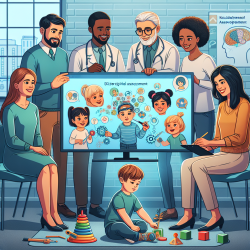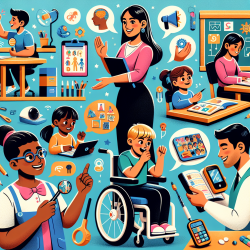Introduction
In the realm of speech-language pathology, particularly within online therapy services like those provided by TinyEYE, understanding the nuances of security and safety is crucial. The research article titled Security or Safety: Quantitative and Comparative Analysis of Usage in Research Works Published in 2004–2019 offers valuable insights into these concepts, which can significantly impact educational environments and therapy outcomes.
The Significance of Security and Safety
The study conducted by Bubnovskaia et al. (2019) highlights the frequency and context in which the terms "security" and "safety" are used in academic literature. The research underscores the importance of these concepts, especially in social institutions like education, where they are more prevalent than in personal contexts.
For practitioners, this means that the external factors of security, such as institutional policies and procedures, are often prioritized over personal safety and psychological security. However, both aspects are crucial for creating a conducive learning and therapeutic environment.
Data-Driven Insights for Practitioners
Practitioners can leverage the findings of this study to enhance their online therapy practices by focusing on the following areas:
- Integrating Security Measures: Ensure that the online platforms used for therapy are secure, protecting both the privacy and data of students.
- Promoting Psychological Safety: Create a safe and supportive environment where children feel comfortable expressing themselves without fear of judgment or reprisal.
- Balancing External and Internal Safety: While institutional security measures are vital, fostering a sense of personal safety and self-regulation in children is equally important.
Encouraging Further Research
The research by Bubnovskaia et al. (2019) opens the door for further exploration into how these concepts can be applied in educational and therapeutic settings. Practitioners are encouraged to delve deeper into the psychological aspects of safety and security, exploring how these can be integrated into therapy sessions to enhance outcomes for children.
By understanding the balance between security and safety, practitioners can develop more comprehensive strategies that address both the external and internal needs of their students.
Conclusion
The insights from the study on security and safety provide a valuable framework for improving online therapy practices in schools. By focusing on both institutional security and personal safety, practitioners can create a more effective and supportive environment for children.
To read the original research paper, please follow this link: Security or Safety: Quantitative and Comparative Analysis of Usage in Research Works Published in 2004–2019.










